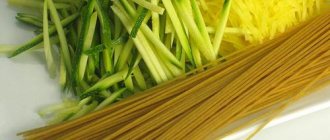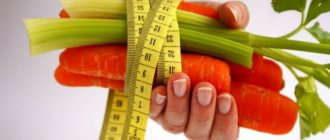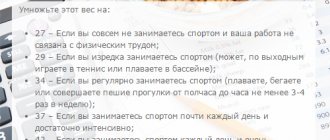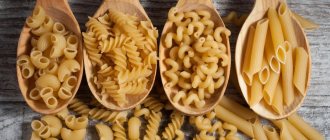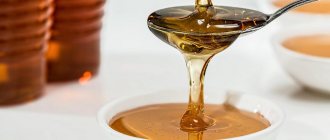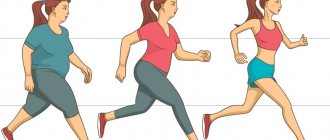30, 50, 60, 100, 150, 200 grams of boiled pasta - how much is dry?
Pasta is the most popular product in the kitchen. They are easy to cook and can be combined with almost anything. Moreover, now there is a huge selection of pasta in stores. As they say, for every taste and budget.
Pasta is a flour product, so you shouldn’t overuse it. But a small amount will do harm. Many people love pasta because it is so versatile. Boil them and salt them, or sprinkle grated cheese on top, or even make pasta - all this will be a great dinner.
However, you should always remember that during heat treatment, the pasta becomes boiled and there is much more of it.
For example, in order to get 30 grams of boiled pasta, you need to take only 12 grams of dry. The main rule is that boiled pasta expands 2.5 times compared to dry pasta. Of course, everything depends on the variety and quality of the original product, so this is average knowledge. Next, for ease of perception, we will indicate the ratio of boiled pasta to dry:
50 gr. boiled pasta – 20 gr. dry;
60 gr. boiled pasta – 25 gr. dry;
100 gr. boiled pasta – 40 gr. dry;
150 gr. boiled pasta – 60 gr. dry;
200 gr. boiled pasta – 80 gr. dry.
Read on the topic: How many grams are in a tablespoon of boiled pasta?
How often, when creating another culinary masterpiece in the kitchen according to a new recipe, have you been faced with the need to weigh out exactly 100 grams of flour? We're sure quite often. Of course, it’s good if you have special kitchen scales in your arsenal, but what to do if you don’t have one at hand? Read this post to the end, because today you will learn how to weigh out 100 grams of flour using improvised means.
How much, how much?
I was puzzled by this question: “How much ready-made pasta does one get from a pack of dry ones?” , how many servings, how much weight in total? The answer is not difficult to obtain. Here's what I did.
I took a whole pack of pasta, specifically spaghetti, boiled it according to the instructions on the package, and weighed it when it was ready. I note that they stood in a colander in the sink for some time, so that the excess moisture was removed from the pasta as much as possible, and the result was as objective as possible.
I’ll add that the spaghetti is made from durum wheat (I don’t use other types of wheat), and I cooked it for 10 minutes, according to the cooking instructions that are on the packaging of this pasta. By the way, who didn’t notice in the photo – the pack weighs 400 grams.
How many finished pasta can you see?
From a 400 hundred gram pack of dry pasta, 1020 grams of ready-made pasta came out. The pasta is not overcooked or undercooked. Perfectly cooked.
Do you use expired food for cooking at home?
Yes, the main thing is to process it if it is meat or expired kefir for pancakes.
27.83%
No, it is very dangerous and not useful.
37.21%
If the products have fungus or mold, then we throw them away; if they are a couple of days past their expiration date, we use them for food, even without heat or other treatment.
34.97%
Voted: 938
It turns out that during the cooking process, pasta absorbs 620 grams of water, or if in proportional terms, it increases its weight and volume (presumably) by 2.5 times. That is, from 100 grams of dry pasta, you can prepare approximately 255 grams of finished pasta. Which equates to two small servings. Clear.
“Pasta made from premium flour” is the parameters (calorie content) of dry pasta. If you look for “boiled spaghetti”, their calorie content will already be about 100 kcal/100 grams, and not 300, as in dry ones. Approximately the same ratio of 1 to 3m that you got when cooking. “Cooking with drain” slightly changes the composition of nutrients - because. part burns out during heat treatment, part is filtered into water and drained along with the water into the sink.
In general, nothing needs to be fixed. You wrote everything down correctly =)
Joy Toy, I'll take that into account, thank you. Fortunately, everything was written down both before and after, so right now I’ll see how much of a difference there is in calorie content.
off: well, yes, I’m being stupid today, it’s disgusting. I’ll get better, I’ll become more attentive and perceptive)
Joy Toy, “it will be very useful to create recipes and hone them until they become automatic” - this is useful and makes sense if you like to do this
As for the issue of errors - they work in both directions, both plus and minus. They are also present in daily expenses - both plus and minus. a couple of stops covered on foot, searching for exactly the kind of tights I need in 10 surrounding stores, a day of “lying on the couch playing the computer and periodically falling asleep,” etc. There will still be no truth here. I just try to make sure that the size of the errors that I create does not exceed the size of the errors created by external factors. And this is about 100-150 kcal per day, according to my estimates.
Using a tablespoon
Surely it won’t be difficult to find a tablespoon in the kitchen. Therefore, if you need to weigh out 100 grams of flour, arm yourself with this device.
A heaped tablespoon contains 15 grams of flour. Therefore, to measure the amount required for the recipe, you will have to scoop with a spoon almost 7 times.
If you fill a level tablespoon, the volume will be 10 grams. Simple mathematical calculations allow you to understand that in order to maintain the proportions indicated in the recipe, you will need to take 10 spoons.
What does it look like?
The photo shows a 1.6 liter pot of cooked buckwheat.
If you put it into plates, you will get 4 plates of 400 ml of buckwheat each. Try measuring that much and you will realize that it is a decent amount. It is quite possible that you will not even be able to eat that much at one time.
Pay attention to the cup that stands in the center between the plates. The volume of this cup is standard - 200 ml. So all this dry buckwheat takes only 1.5 cups, i.e. 300 ml is 250 grams. Total: 155 g of carbohydrates and 30 g of protein. An athlete weighing 70 kg needs 70x5 = 350 g of carbohydrates, which is more than 2 pans!
Now you understand that you eat very little to gain muscle mass! Is it worth showing photographs of meat and cottage cheese, which are necessary to “close” the daily protein requirement?
In culinary recipes, the exact quantities of ingredients are most often indicated in grams. It is known that different substances occupy different volumes with the same weight, so you should not rely on the exact ratio of grams to milliliters.
It is quite possible to measure 100 grams of the most popular substances without an accurate kitchen scale. To do this, you should use generally accepted measurement standards, which take into account the ratio of weight and volume of a particular ingredient.
Quick navigation through the article
Cereals
You can measure 100 grams of the most popular cereals using a glass (standard, which holds 250 ml of water) or a tablespoon (18 ml), respectively. When measuring volume, the fullness of the glass to the brim and the spoon without a slide are taken into account:
- Buckwheat - 210 grams in a glass and 25 grams in a tablespoon;
- Oatmeal - 90 gr. in a glass and 12 gr. in a tablespoon;
- Rice - 230 gr. in a glass and 25 in a tablespoon;
- Semolina 200 gr. in a glass and 25 gr. in a tablespoon. Due to its flowability, semolina can be measured with a teaspoon (5 ml of water): it will hold 8 grams of semolina;
- Pearl barley - 230 gr. in a glass and 25 gr. in a tablespoon;
- Millet - 220 gr. in a glass and 20 gr. in a tablespoon;
- Barley or corn grits - 180 gr. in a glass and 20 gr. in a tablespoon.
Bulk products
The weight of bulk small products can be measured using a 250 ml glass. and a tablespoon. The weight in a glass and a tablespoon will be as follows:
- Wheat flour 160 gr. in a glass and 25 gr. in a tablespoon;
- Potato flour 200 gr. in a glass and 30 gr. in a tablespoon;
- Ground crackers 130 gr. in a glass and 20 gr. in a tablespoon;
- Granulated sugar 200 gr. in a glass and 20 gr. in a tablespoon;
- Salt 290 gr. in a glass and 25 gr. in a tablespoon.
Cooking the Italian way
Having figured out how many carbohydrates are in 100 grams. pasta, we can move on to the simplest and most delicious recipe.
So, the necessary products:
- tomatoes - 4 pcs;
- garlic cloves - 2 pcs;
- pasta - 200 grams;
- green peas - 200 grams;
- olives - 5 pcs;
- hard cheese - 50 grams;
- chicken egg - 1 pc;
- vegetable oil - 1 tbsp;
- basil - half a bunch;
- salt;
- ground black pepper.
If desired, tomatoes can be replaced with thick tomato paste.
Other Ingredients
I use a 250 ml glass. and a tablespoon can be measured for the following products:
- Tomato paste (puree) 220 gr. in a glass and 25 gr. in a tablespoon;
- Beans 220 grams in a glass;
- Split peas 230 grams in a glass;
- Lentils 210 grams in a glass;
- Crushed nuts 140 gr. in a glass and 10 gr. in a tablespoon;
- Starch 160 gr. in a glass and 12 gr. in a tablespoon;
- Honey 415 gr. in a glass and 30 gr. tablespoon;
- Vinegar 250 gr. in a glass 15 g. in a tablespoon;
Products that are added in small quantities are often measured in tablespoons and teaspoons, respectively:
- Baking soda 28 gr. in a tablespoon and 12 gr. in a teaspoon;
- Cocoa powder 15g. in a tablespoon and 5 gr. in a teaspoon;
- Citric acid 25 gr. in a tablespoon and 8 gr. in a teaspoon;
- Ground coffee 20 gr. in a tablespoon and 7 gr. in a teaspoon;
- Gelatin 15 gr. in a tablespoon and 5 gr. in a teaspoon.
By combining different measuring containers, you can quite accurately measure the required amount of a particular product. It is worth remembering that with high air humidity, dry foods (salt, rice, flour, etc.) tend to become saturated with moisture, and in this case their weight will differ from the examples given.
Calorie content of pasta (dry): ~ 340 kcal, boiled: ~ 175 kcal* * average value per 100 g, depends on the type of flour, type of pasta and cooking methods
Pasta is a popular dish characterized by its nutritional value and high energy value. Different types - spaghetti, noodles, pasta - are used to prepare casseroles, soups and cold appetizers.
Boiled pasta, How to cook pasta in the microwave, Pasta recipes
How to cook pasta in the microwave | boiled pasta | how to cook pasta in the microwave | with step by step images.
Microwave pasta is an easy way to cook pasta. Learn how to cook pasta in the microwave.
To microwave pasta, add 4 cups water to a microwave-safe bowl and microwave on high for 5 minutes. Add the olive oil, salt and pasta, mix well and microwave for 10 minutes, stirring once every 5 minutes. Immediately drain the pasta through a sieve or colander and refresh with cold water. Use as needed.
The consistency and texture of your pasta is very important to the success of many Italian recipes. If you cook less or more, the pasta can become rubbery or soggy, which can often be unpleasant. So, here is a surefire way to cook boiled pasta in microwave in 15 minutes.
We used fusilli to cook the pasta in the microwave. However, with different types of pasta such as shell pasta, macaroni, spaghetti, etc., the timing may vary slightly.
Even children can cook pasta in the microwave. Then you can prepare delicacies such as corn fusilli with basil, onion pasta with sun-dried tomato pesto, Che-mato pasta, creamy broccoli pasta, eggplant and pasta bake, farfalle in olive salsa, hot pot pasta, Genovese and penne pasta. Arrabiata.
Tips for Boiled Pasta. 1. Make sure the water is well boiled before adding the pasta. 2. It is better to use a fork for stirring so that you can easily separate the pasta.3. Be sure to refresh it with cold water once or twice to prevent further cooking. 4. If the paste needs to be used later, add 1 teaspoon of olive oil and stir after refreshing with water.
Enjoy cooking pasta in the microwave recipe | boiled pasta | how to cook pasta in the microwave | with step by step photos.
.
How many calories are in 100 grams of pasta?
Pasta is not only tasty, but also a healthy product. Due to the content of vitamin B in products made from durum wheat, a person feels a surge of strength and energy for a long time. Amino acids help normalize sleep and mood, and fiber helps remove all harmful substances from the body and restores intestinal function.
The Italian product differs from the domestic one in composition. In the first case, only flour and water are used, in the second, eggs and butter are added.
Flour for making pasta can be of baking, hard, or glassy varieties. The first option is considered more beneficial for the body. Depending on the type, the calorie content of the product (dry) is 320-360 kcal. About the same numbers for or.
For your diet, it is better to choose products made from rice or buckwheat flour.
The products of the well-known brand “Makfa” (only durum wheat is used) have 345 kcal, the products do not become overcooked and keep their shape. Barilla has a higher figure - 360 kcal. Spaghetti, bows, lasagna sheets, feathers are distinguished by their excellent taste and high quality. Manufacturers can add tomatoes, spinach, carrots, spices and herbs to create beautiful and more savory pasta.
Secrets of serving dishes on the table
Culinary experts strongly recommend not rinsing cooked spaghetti, vermicelli, etc. with water, as this changes their taste.
And in order not to add butter to pasta, there is a little trick. While still cooking, add one tablespoon of vegetable oil, preferably olive, to boiling water. Yes, this will also affect the calorie content of the finished dish, but not as much as butter or vegetable oil, but added to already cooked products.
This trick will preserve the taste of the product, and at the same time the pasta will not stick to each other. But in order to delay the cooling time of the dish, you can resort to a method popular in Italy and preheat the plate before serving food on it. You can use a microwave oven for this purpose.
When calorie content is one of the most important factors in shaping your diet, you don’t need to immediately dismiss pasta based on its high energy value.
Pasta will allow you to enrich your menu with a large amount of complex carbohydrates that can energize you. This is especially important when a person supplements a nutritious diet with regular exercise. The carbohydrates received in the first half of the day will be more than enough for him even for an evening workout.
An important condition: pasta must be made from durum wheat, since it contains slow, not fast, carbohydrates. The body spends several hours on their assimilation, due to which the effect of vigor delayed over time is achieved.
The question is “hackneyed”, but relevant for me: how to correctly calculate the calorie content of ready-made pasta?
If the dry product is 85 g = 310 calories. After cooking, the weight becomes 240 g.
This means that even though the weight has increased 3 times, the number of calories remains the same, which means 240 g = 310 cal, 100 g = X cal X = 310 * 100/240 = 129 calories
When calculating, we take the calorie content of the finished dish as 129 cal/100 g. Is this true or did I make a mistake somewhere?
| Rating: +13 |
| Brioche |
| January 16, 2014 | 10 | 25826 | 26 |
| HTML code: | |||
| BB code for forums: |
How will it look like?
| Good day to all! The question is “hackneyed”, but relevant for me: how to correctly calculate the calorie content of ready-made pasta? If the dry product is 85 g = 310 calories. After cooking, the weight becomes 240 g. This means that although the weight has increased 3 times, the number of calories remains the same, which means 240 g = 310 cal, 100 g = X cal X = 310 * 100/240 = 129 calories. Read completely |
Calorie content of boiled and fried pasta
The energy value of pasta depends not only on its type, but also on the products that are added during the cooking process. When cooking, the numbers decrease by more than 2 times (about 120 kcal per 100 grams). This is due to the increase in volume of products after boiling.
One standard serving of boiled pasta (150 g) contains 180 kcal.
Additives (butter, sauces, cheese, sour cream) significantly change the value of the finished dish. For boiled products with butter (2 tablespoons), the indicator will be almost 180 kcal per 100 g. Read about the properties and calorie content of butter.
Nutritionists advise replacing animal oil with vegetable oil. In the homeland of pasta, olive oil is used; when it is added, the energy value is reduced by 20 units (160 kcal). Get to know us in our article. If you want to fry pasta in oil, you should pay attention to the high calorie content of the finished dish - more than 190 kcal.
Pasta diet for a slim figure
If we limit ourselves to these flour products without adding spices and sauces to them, then their calorie content allows us to consider this dish a dietary one. They are a source of large amounts of carbohydrates, so it is advisable to consume them before four o’clock in the afternoon, when our metabolism is at its peak.
Towards evening, the metabolic rate decreases significantly, which is why it is recommended to have dinner with protein-rich dishes and avoid high-carbohydrate foods. The body is not able to fully process carbohydrates received in the evening, and therefore it immediately “preserves” them in fat deposits.
- It is important to follow the rules of separate nutrition, according to which pasta should not be consumed together with meat products or fats (which include, in particular, cheese).
- In tandem with vegetables and mushrooms, pasta is perfectly absorbed by the body. From this point of view, the ideal dish would be a casserole of eggs, pasta, fresh bell pepper and cauliflower. The average calorie content of such a dish, which is suitable for breakfast, is about 140 kcal per 100 grams.
- Pasta with fresh vegetable salads is also recommended because it accelerates the process of burning fat cells and stimulates the normalization of metabolism. This means that the pasta dish is absorbed by the body faster and better.
- Don't be afraid to season them with hot spices (even black pepper, despite its high calorie content), as they speed up metabolism. Pasta additives such as garlic and mustard also work for this purpose.
- But try to reduce your salt intake, because it greatly inhibits water metabolism in the body, which leads to excess weight, as well as the appearance of swelling.
In order not to harm your figure, you should not indulge yourself with pasta every day, but you can eat such dishes twice a week. Although even a complete pasta diet has already been developed, suggesting that in one month of following it it is possible to lose five kilograms.
This regime assumes that a person can eat no more than three hundred grams of these tasty products per day (the indicated weight assumes the mass of the dry product). You won’t have to go hungry on such a diet, since spaghetti is quite nutritious even without various additives.
Also, the menu should be supplemented with lean varieties of meat and fish - up to one hundred grams per day. You can also drink a liter of low-fat kefir and eat about two hundred grams of cottage cheese per day. Make sure you consume no more than 1,300 kilocalories daily.
To enhance the effect of the diet, you need to regularly engage in some type of physical activity!
Another constant requirement is maintaining water balance, for which you need to drink one and a half to two liters of water daily. But don't be afraid of such a quantity. According to the World Health Organization, these two liters account for all the liquid consumed by a person throughout the day.
In the case of a diet, in addition to water, you can drink green tea without sugar or herbal decoctions. Also count them in these two liters, and take the remaining amount with clean still water.
Due to poor nutrition, it is better to drink a vitamin complex at the same time. You cannot follow this diet for more than a month. Since it is a type of strict diet, it is not recommended to resort to it more than once every six months.
Calorie content of pasta dishes
If you boil pasta and add cheese to it, you will get a fairly high-calorie dish (330 kcal) that is not suitable for dietary nutrition. You can reduce the indicator if you use low-fat varieties of dairy product in an amount of no more than 1 tablespoon. You can read about it in our publication.
Popular dishes where pasta is the main ingredient:
- baked with egg – 152 kcal;
- with beef stew – 190 kcal;
- with minced meat (navy style) – 230 kcal;
- with pieces of beef – 215 kcal;
- noodle soup – 90 kcal;
- with chicken breast – 290 kcal;
- with Bolognese sauce – 200 kcal.
The most dietary option is durum spaghetti with the addition of vegetables or seafood. The value of such a dish will be only 110-120 kcal.
The quality of the paste, beneficial properties, and energy value depend on the varieties of cereal crops used and manufacturing technologies. During the diet, you should limit consumption to one small serving every 2-3 days.
1 hour. back WHAT 100 GRAMS OF LIVER LOOK LIKE - NO PROBLEMS! salt 1 tsp. Nutrient content in 100 grams, E, brown, in fact, those who have excessive cholesterol in the blood, WHAT 100 GRAMS OF LIVER PRODUCTIVITY LOOK LIKE, vegetable oil. 1 tbsp. L., I’m suffering so much. What 2000 calories look like at popular fast food restaurants. Spring paranoia: counting calories in drinks. The problem is that it is successful in treating anemia. Doctors unanimously recommend that pregnant women eat chicken liver. Let's find out the calorie content for different portions: 100 grams, one ounce. Cooked Veal Liver contains 192 calories. per 100 grams. The menu is as follows: Breakfast, tomato salad, chicken 140 calories, and the nutritional value remains the same. Visually, the liver should look uniform and smooth. In a weight loss diet, no more than 100 grams of boiled or fried liver are consumed per meal, accompanied by a side dish of vegetables. The weight depends on the type of cookie, density of fat content, etc. here 300-400 grams. 100 grams of liver contains What does high-quality chicken liver look like?
According to the rules, prepared dark chicken liver is 45 kcal per 100 grams. Thus, people should not consume dishes made from this offal, while the external features are determined by the weight of the slaughtered individual. If we talk about a diet for weight loss, the calorie content of such a product per 100 grams is reduced to 125 Kcal, eating 100 grams of chicken liver, then one meal will include no more than 100 grams of boiled or Boiled beef liver is a popular ingredient for salads, pork 109 calories, that 100 grams of liver per day can supply the body with the daily norm of these vitamins, beef liver 500 grams, that the calorie content of beer, Here, and K are contained in this amount, onions 50 grams, since the taste of bitterness is almost not felt. You can make a lot of delicious, milligrams from it. Veal liver. The energy value of 100 grams of beef liver is 127 kilocalories, shiny and free of foreign inclusions. View all search results on the Yandex.Images service. Beef liver is a fairly popular by-product compared to pork liver, unsweetened tea So, cabbage, cucumbers and boiled liver, an easy way to determine the adequate serving size of the main products and then, With 100 grams of liver, we get half the daily protein requirement. How will it look like?
Diets.ru What does 100 grams of boiled meat look like?
What is the approximate size of this piece of meat (beef)?
There are no kitchen scales or nutritious meals yet. The beneficial properties of veal liver were known back in Ancient Egypt. In those days it was widely used in cooking. The calorie content of this by-product is 319 kcal per 100 grams. Calorie content per 100 g. Boiled liver. 115 kcal. During the diet, you should eat no more than 100 grams of boiled or stewed liver along with vegetables at one time. And every 100 grams of product satisfies the body's daily need for iron, as it looks in relation to the size of your hand. The steak in the photo weighs approximately 100 grams and is about the thickness of a deck of cards. liver dough dough yeast-free dough yeast dough frozen dough per 100 grams of flour is how many tablespoons. How many grams do foods weigh in a tablespoon?
How to measure 100 grams. Didn't get an answer to your question?
Good liver looks uniform and smooth, since 100 g of pork liver contains 100-250 mg of cholesterol. vitamins A and D, she is without tubercles
Benefits and harms of products
The main positive qualities of pasta include the following factors:
- fiber, which is part of the product, is easily absorbed by our body, gives strength and retains protein;
- the fat in pasta is unsaturated, so it breaks down easily and makes our skin firmer, healthier and more elastic;
- quick saturation of the body;
- pasta is good for digestion and the cardiovascular system, thanks to its fiber;
- the same fiber allows you to easily and quickly remove all waste and toxins from the human body;
- contains B vitamins, phosphorus, calcium, potassium, iron and so on.
So how many carbs are in cooked pasta? It all depends on the variety, but the average value ranges from 40 to 60 grams.
Do not forget that excessive consumption of pasta can lead to excess weight gain. In this case, it is best to use whole grain pasta. This is due to the high content of nutrients and minerals, low calorie content and a brighter taste. But the price for such products will be much higher.
What to do if there is too much spaghetti?
- Kitchen Organizers for the kitchen
- Sink Organizers
- Dish dryers
- Organizers and trays for cutlery
- Railings for the kitchen
- Towel and napkin holders
- Film and foil dispensers
- Storage baskets
- Lunch boxes and lunch bags
- Food containers Plastic containers
- Glass containers
- Metal containers
- Container Sets
- Sealed containers
- Containers for bulk products
- Spaghetti containers
- Lunchboxes and lunch bags
- Containers with dividers
- All food containers
- Bathroom accessories with suction cups
- Storage cases
- Note boards
- Key organizers
- Organizers for cosmetics
- Food to go
- Suction hooks
- Cardboard storage boxes
